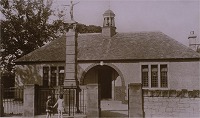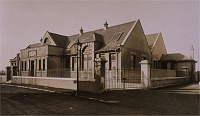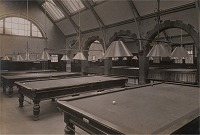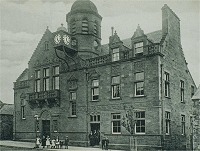Contents ![]() | The earliest public libraries
| The earliest public libraries ![]() | Learning organisations
| Learning organisations ![]()

The Working Men's Institutes
Page 2 of 2 | Previous
Working men's institutes in East and Midlothian were slow to start. The earliest seems to been the Dalkeith Working-Men's Club and Institute of 1867. A handful of other examples appeared before, in the 1920s, grants from the District Miners' Welfare Fund were used to start several.
The Mineworkers' Central Welfare Committee in London supported 'recreation, health and education in the mining areas' from a 1d levy on every ton of coal produced and the proceeds were distributed by local Miners' Welfare Funds. Miners' (or Working Men's) Institutes were popular recipients, shortfalls being made up by local subscriptions and fundraising. The Fund paid £2,000 towards building an Institute in Ormiston, East Lothian, in 1925, but this was only part of the cost. In 1930 the Fund paid for the erection of the Cousland Institute, Midlothian, although the Earl of Stair donated the land.

Whilst philanthropy, grants, appeals and fund-raising were the most common ways of financing a new Institute, there are two examples in Midlothian that go against the norm. These were the Institutes at Newtongrange and Easthouses. Newbattle (Newtongrange) Institute was built with funds borrowed on the promise of the future profits of the Dean Tavern, a Gothenburg pub in Newtongrange.It was opened in 1911 with a billiard room, reading room, temperance refreshment room, kitchen and toilets. Membership of the Institute was 1d. (less than 0.5p) every two weeks. The management committee was composed of five officials of Lothian Coal Company and five elected workmen. The Institute proved very popular and an extension was opened in 1914, housing a separate games room and smoking room. Easthouses Institute was built in 1925 (almost the last building paid for by the Dean Trust).

Nearly all of the larger Institutes built in the twentieth century had at least one billiard table, and there is evidence that Easthouses had at least seven. Wallyford, East Lothian, also oversaw the building of a tennis court in 1924. The Dalkeith Working Lads' Institute also held a series of lectures each year and practised gymnastics: in 1925 it became the Dalkeith Maoris club.

In the 21st century the Working Men's Institutes continue. Although many are seen as simple social clubs they provide accommodation to many other societies, committees and self-help groups. In the Lothians, only a few have disappeared completely: Prestonpans East was demolished. Several old institute buildings continue to serve their local communities in a variety of ways. Penicuik's large Cowan Institute now serves as local government offices. Those at Rosewell, Midlothian, and Tranent, East Lothian, were converted to housing in the 1990s. The others continue to function as either community halls or social clubs, continuing to benefit the same communities for which they were originally built.
Page 2 of 2 | Previous
In this section:
Schools of arts and the mechanics institutes | Working Men's Institutes | Trust public houses
Contents ![]() | The earliest public libraries
| The earliest public libraries ![]() | Learning organisations
| Learning organisations ![]()